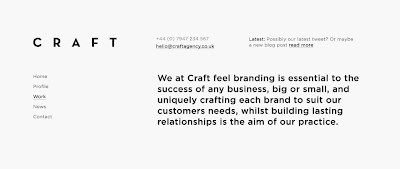How not to fail
Entrepreneur rollercoaster - Uninformed optimism - informed pessimism - crisis of meaning - crash and burn - hopeful realisation (getontherollercoaster.com)
5 reasons why businesses fail
- Failure to adapt to a changing market
- Failing to continuously market yourself
- Not seeking advice or professional help when necessary
- Inadequate accounting records
- Disregarding or misinterpreting financial records
1) Failure to adapt to changing times
- Keep up
- Be informed
- Understand your macro and micro environments
- Analyse and find your place within your competitors
- SWOT your competitors / other practitioners (say, 3 that already do what you want to do - look at their
strengths and weaknesses, but be objective)
- PEST your environment (see what factors are in your favour -
why is it a good idea?)
Websites
NESTA - Analyses the creative industries and hows 'creative clusters' - reasoning for your location choice
Design Week - All aspects of the design industry, possible quotes for presentation
A-N.org.uk - Artist newsletter, knowledge bank resources - contracts, frameworks, business plans
Creative choices - Essential tools, career guidance, graduate start-ups
2) Failing to continously market yourself
Marketing plan - refer to how you would raise awareness, gain interest and so on...
Marketing communication mix - mention by name in presentation
Choose 3 methods to promote your business but use them creatively and imaginatively
Differentiate yourself by the way you think
3) Reasons why people fail
Five tips for design students
- Integrity - believing in your work, being honest
- Communication - imperative, be credible, develop verbal and visual presentation skills
- Cultural awareness - visual arts, maintaining this cultural awareness
- Development of professional skills - how we add value through planning, organisation
- Getting back to basics - think like an artist, seeing things differently, creative solutions
- Who will focus on marketing? Accounting? Art direction? Administration?
- Assign roles to team members
4) Inadequate accounting records
5) Disregarding or misinterpreting financial records
Keep finance on track - record every purchase / outgoing and so on
Accounting is essential
Business plan
What resources will you need?
Equipment
Space
Stock
Buy, rent or lease your equipment and space?
Why will people buy from you
- 3 competitors
- Look at their strength and weaknesses
- Make your augment coherent
- Say what opportunities this presents to you
Marketing plan
- Three effective and innovative methods
- Explain why they will be effective in reaching your particular target market
- Talk about the 'what' as opposed to the 'how'
- Why will visiting your website be a different experience to others?
- Differentiate yourself
How much will it all cost
- Start up costs
- Overheads
- Direct costs (materials and labour)
- Can you fund it yourself?
- Just show your considerations
Presentation
- No more than 10 slides
- Use powerpoint ONLY as a visual aid
- Do not use it as a crutch
- Hold your notes in your hand
- Treat it like a business pitch
Interviews
- Before you go to an interview, have a look at their competitors
- What are their strengths? How can you contribute towards these?
- What is in development? Contribution towards future plans
- The employer is in business to make a profit - USP, external environment
- Employers are looking for someone who can make a difference
- Conduct a SW analysis and see f you can come up with some opportunities
- Ask them about their competitors to show you have some business capabilities
- Ask them about things affecting their industry
Studio space / workshops
Factory - Screenprinting, woodworking etc
East street arts - Studio and artist spaces (cheapest in Leeds)
Umbrella - General space, creative hubs
Limehouse - Expert advice, manage space (receptionist), offices
Round Foundry - Creative businesses, folding offices
Old Broadcasting House - Hotdesking
Wildfire
































